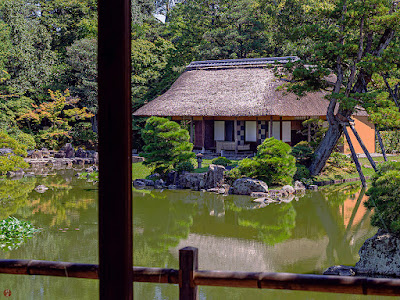In the deep past, until the spread of the lunar calendar introduced from China, Japanese people perceived intuitively the subtle transition of the seasons through the sensitive awareness of the movements of the sun and the moon, the changes in weather, the flowering and coloring of plants, and other transitions in nature.
The delicate sentiment of admiring the beauty of nature changing from season to season has been the traditional aesthetic sense of Japanese that permeates all Japanese arts, including fine arts, literature and so on. The four seasons and their transitions have been expressed lyrically in a variety of natural scenes symbolized by Kachohugetsu (flowers, birds, wind, and the moon).
According to such aesthetic tradition, the scenery and architecture of Katsura Rikyu have been composed so as to correspond to the qualities of the four seasons for entertaining its guests in each season. It is said that each teahouse in this garden symbolizes each of the four seasons.
While the "Geppa-ro" is the teahouse for viewing the harvest moon and has an typical autumnal character, the "Shokin-tei" teahouse, which is said to have been designed by Enshu Kobori, is considered to represent the season of winter. This teahouse is built in the direction of moonrise on the winter solstice and is equipped with a stone furnace for heating.
The name "Shokin-tei" means "the house of the beautiful tones of the harp and the wind blowing through pine trees." This name was taken from the classic Waka poetry "on the quiet fall night, I wondered which of the beautiful sound of harp or the sound of the chilly wind passing by pine trees was echoing beautifully in this way," which is included in Goshui Wakashu (Gleanings from a Later Collection of Japanese Poetry).

No comments:
Post a Comment